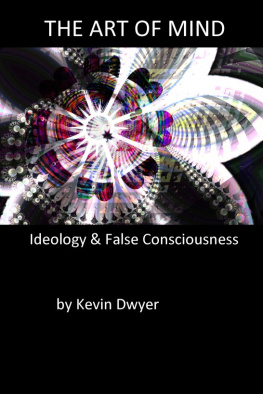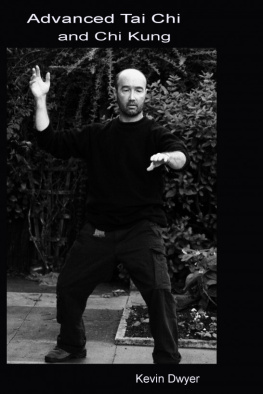Dwyer - Rapid eye. 1
Here you can read online Dwyer - Rapid eye. 1 full text of the book (entire story) in english for free. Download pdf and epub, get meaning, cover and reviews about this ebook. City: Great Britain;United States, year: 2013, publisher: Elektron Ebooks, genre: Detective and thriller. Description of the work, (preface) as well as reviews are available. Best literature library LitArk.com created for fans of good reading and offers a wide selection of genres:
Romance novel
Science fiction
Adventure
Detective
Science
History
Home and family
Prose
Art
Politics
Computer
Non-fiction
Religion
Business
Children
Humor
Choose a favorite category and find really read worthwhile books. Enjoy immersion in the world of imagination, feel the emotions of the characters or learn something new for yourself, make an fascinating discovery.
- Book:Rapid eye. 1
- Author:
- Publisher:Elektron Ebooks
- Genre:
- Year:2013
- City:Great Britain;United States
- Rating:5 / 5
- Favourites:Add to favourites
- Your mark:
- 100
- 1
- 2
- 3
- 4
- 5
Rapid eye. 1: summary, description and annotation
We offer to read an annotation, description, summary or preface (depends on what the author of the book "Rapid eye. 1" wrote himself). If you haven't found the necessary information about the book — write in the comments, we will try to find it.
Dwyer: author's other books
Who wrote Rapid eye. 1? Find out the surname, the name of the author of the book and a list of all author's works by series.
Rapid eye. 1 — read online for free the complete book (whole text) full work
Below is the text of the book, divided by pages. System saving the place of the last page read, allows you to conveniently read the book "Rapid eye. 1" online for free, without having to search again every time where you left off. Put a bookmark, and you can go to the page where you finished reading at any time.
Font size:
Interval:
Bookmark:
RAPID EYE 1
BY SIMON DWYER
AN EBOOK
ISBN 978-1-909923-21-8
PUBLISHED BY ELEKTRON EBOOKS
COPYRIGHT 2013 ELEKTRON EBOOKS
www.elektron-ebooks.com
No part of this publication may be reproduced, stored in a database or retrieval system, posted on any internet site, or transmitted, in any form, or by any means, electronic, mechanical, photocopying, recording or otherwise, without the prior permission of the copyright holders. Any such copyright infringement of this publication may result in civil prosecution
I SPEAK FOR THOSE WHO LEFT
When I physically met Simon Dwyer he was robust, strong, clear-headed, perceptively intelligent, adamant; a knight apparent who charges forward with courageous folly and wins the errant day.
When I physically lost Simon he was slender and pliable; a zen masters brush leaving a trail of feathery ink and precise markings soaking slowly into the surface fibres of carefully prepared paper. He won the day.
It is so easy to be seduced by the physical plane. Plain to sea.
Yet even as the material plane screams at us that it has substance, is strong and challenging, immovable, we, small clustered creatures of sensual fragility, see only the diaphanous surface. A gossamer thin film of colours and shadows that has settled over everything, giving it shape and implying solidity.
This process of believing in what we see, enables us to move around, get from place to place, avoid stumbling and bumping into each other. Such chance encounters being fraught with danger of many kinds; languages foreign to us, territorial disputes, posturing and snarling predators, cowering crowds of refugees. Noises stage right. Blue cones strobing warnings. Stage fright.
It would be easy to get lost in here, amongst the clashing billions of universes vying for attention as they build concrete memories of
themselves. Trying to feel density. What you are becomes, quite literally, what you see. What you see becomes both a survival instinct and tool. Add to this maelstrom a sense of acceleration and spinning and navigation appears as hopelessly impossible as hesitation. Shoulders hunched against the sensory blizzard a formless stranger hustles by, swirling grey dust, mutters, Seeing is believing.
Seeing is a first step. We lurch forward into the data pollution.
Mad traffic hoping not to stumble on the curb. Relying, as we must, upon our belief that we are solid, that the asphalt is solid. That enough friction can occur to propel us effectively towards our destination. If our peripheral vision holds up. If our brains efficiently translate and filter screeching cars, filing them separately from screaming kids. If we dodge and weave. Act decisively and keep our gaze and intent firmly locked onto the objective. Taking into account variable conditions at the centre of this universe which is our individual being. Then, random chance willing, we will make it to our goal.
That which was blurred by the effect of distance will come into sharper and sharper focus. Weve all seen these movies.
The screen shimmering, everything distorted and blurry. You can almost feel the sweat trickling. Your hand involuntarily twitches. This is so real that you went to wipe your brow for a split second. Gradually, ever so slowly, and without discernable patterns of any
kind, the amoeboid shapes that have been so mysterious, so puzzling as they shaped, shifted, fragmented and reassembled languorously awaiting decoding based upon previous information, begin to solidify.
Suddenly, Pop! As if out of nowhere. Alls clear. The voices no longer muffled. The distractions gone. The unnecessary background noises disappear. No interference. Perfect definition. Frozen for a momeant. A pick-up truck in a Los Angeles heat haze.
Our hero stands alone. The child remains connected to a group mind until thinking creates separation. Our thoughts, not our manners, maketh man. Thinking, thinking alone, disconnects us from all others. Such a great loss occurs at the birth of individual thought that life can often become centred on the quest to return to the previous, connected state. To once more be a particle of a greater consciousness. To travel beyond the substantial into the very heart of compassion.
This journey is the hardest. Gone is the illusion that anything is fixed, or constant. The vines that shelter the arbour from illumination by the sun are arbitrary. For they too rely upon the light.
Our hero sits in contemplation. Sanctuary dissolving facing fear and the unknown in direct proportion to the increase in
illumination as the vines lose materiality. At some point all is filled with this sameness made of light. Cell by cell. Space by space. All that was visible is visible equally and without surface.
Shoulders stretched, erect within the limitless vision a formless being hustles by, swirling, fluttering and whispers, Believing is seeing.
It is our great good fortune, seeded as a blessing through Simons acknowledgement of us, that really, nothing of significant spiritual or meta-physical value (which to me is, or should be, interchangeable with cultural value) is actually material.
All that survives outside the loops of time are words and images. That which, for no better reason than it happened, we call Art. Really though, not even Art survives. Ideas crystallised in the form of Art survive. Know not even that.
Ways of seeing. Waves of seeing. Positions from which to look. Perspective linking one frightened universe to another, creating a bridge of immortality. Knot mortal. A subjective point of reference. Luckily for us, for NOW!, the point at which Physics (the physical study) and Art (the metaphorical study) coincide. Perhaps collide.
It is my belief that Simon Dwyer understood that his conversations with each of us would occur because he wrote.
It is my boundless hope that you will come to treasure your interaction with them
because words can speak differently to each individual.
Ending the unintended separation of our particular universes for a momeant. Easing our loneliness.
After you have lived with Simon in his universe for a time, please come back. Read this allegory once more.
Genesis P-Orridge, NYC 1999.
Genesis P-Orridge And The Temple Of Psychic Youth(From A To B And Back Again)
Western people often see obscenity where there is onlysymbolism.
Sir John Woodroffe, Shakti & Shakta
Whoever wishes to be creative, must first destroy and smashaccepted values.
Nietzsche
Cults he said thoughtfully, examining a tape reportgrinding from the receptor. What about cults? Sung-Wuasked faintly. Any stable society is menaced by cults; oursociety is no exception. Certain lower strata areaxiomatically dissatisfied. In secret they form fanatic,rebellious bands. They meet at night; they insidiously expressinversions of accepted norms; they delight in flaunting basicmores and customs.
Philip K. Dick, The Turning Wheel
Social cohesion and individual liberty are in a state of permanent conflict or uneasy compromise. The result of this friction being a variety of cults, which fall like a veil of sparks, lighting the dark.
CRACK! Kathy Acker leaves the stage, her American brogue giving way to a whipping electronic beat that incessantly pounds the sweaty walls of a subterranean nightclub. A howl of wolves turns the beery air to frost. Necks tingle and hackles rise to the speeches of Hitler and JFK that spill from the speakers, the 23 TV screens on stage swim to life, forming a giant mirror that glows with recurring images.
Font size:
Interval:
Bookmark:
Similar books «Rapid eye. 1»
Look at similar books to Rapid eye. 1. We have selected literature similar in name and meaning in the hope of providing readers with more options to find new, interesting, not yet read works.
Discussion, reviews of the book Rapid eye. 1 and just readers' own opinions. Leave your comments, write what you think about the work, its meaning or the main characters. Specify what exactly you liked and what you didn't like, and why you think so.











